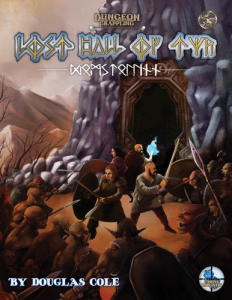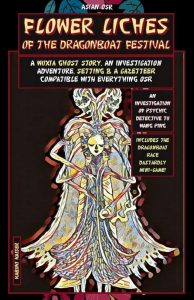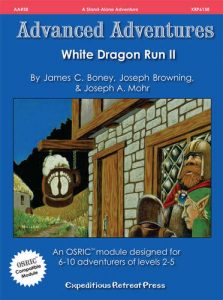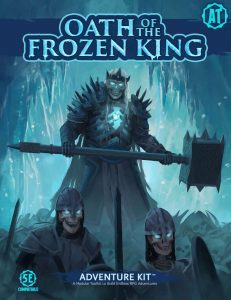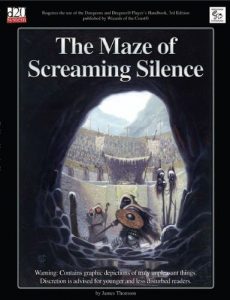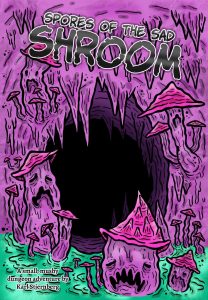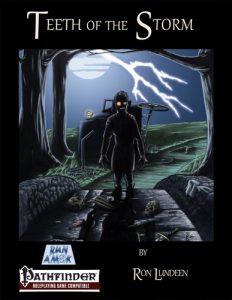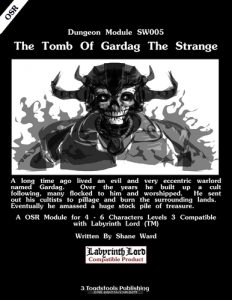
By Denis McCarthy
Aegis Studios
S&W Light
Level???
Fifty years ago, a magician known as Melchior the Despoiler, rumored to be consorting with dark forces near the town of Southfork was investigated by a troop of militia and a priest… all of who returned from his tower as undead attempting to slay their own families. They were defeated, and after a petition for aid, the Duke lent the village his trebuchet and his men leveled the mage’s tower. Shortly before this assault was mounted, Melchior’s apprentice Xander escaped with a few books, a wand and a magical blade. Now that Xander has died. His apprentice, Aurelia, together with her henchmen, have returned to find the master’s library. Unknown to them, goblins have been living in the ruins for 30 years…
This is a 26 page adventure describing a minimally keyed seventeen room dungeon. A healthy introduction to the region takes up the first twelve pages, which along with the single-column format explains the large page count for a minimally keyed product. There’s not really anything to it.
*) This doesn’t have a level listed. I’d guess level two or three. There are a decent numbers of monsters, including wolves and bugbears.
*) The wilderness map is hard to read. I like the charm of hand drawn maps, and would not want to raise the threshold of publishing by insisting on comp-drawn, but the maps HAVE to be legible. The wilderness map in this is barely so. The dungeon map is better, but I still struggle with some notations on the map.
*) Speaking of maps, the dungeon is a simple branching design. Turn right and its the older undead portion. Turn left and it’s the goblin portion. Exploratory Games, like S&W, tend to do better with Exploratory Dungeons, with loops and so on. “Quest maps” are simpler and more suitable for Quest Games. Yes, there’s crossover in the genres; don’t be an ass.
*) The dungeon is supposed to have four entrances, but they are not really noted. There are two stairs, and I think I can tell which is which from the text. I think also I thinkered out entrance three, from we.. Fuck if I can tell where entrance four is. More clarity in this area would have been appreciated.
*) Out in the wilderness the wanderers are sometimes doing something, which I appreciate as a cue to the DM in helping them run the encounter. There is basically one sentence describing things, like bandits acting as toll collectors, of a tinker with dubious goods to sell. This is about the minimum text that I would say “adds to the encounter.”
*) The dungeon is minimally keyed. “Guardroom – 3 goblins and 1 wolf” or “Goblin Quarters – 4 goblins” is generally the extent of the description. This does NOT meet my acceptable level of Value Add. Rolling on the random monster table from the 1e DMG does not qualify. At least have them doing something in the guardroom, or put a big bubbling boiling pot in the quarters.
This is $3 at DriveThru. The preview is seven pages. Near the end you can see the wilderness map I had issues with, as well as the wilderness wandering monsters, for better & worse.https://www.drivethrurpg.com/product/232358/Beneath-the-Fallen-Tower?affiliate_id=1892600

